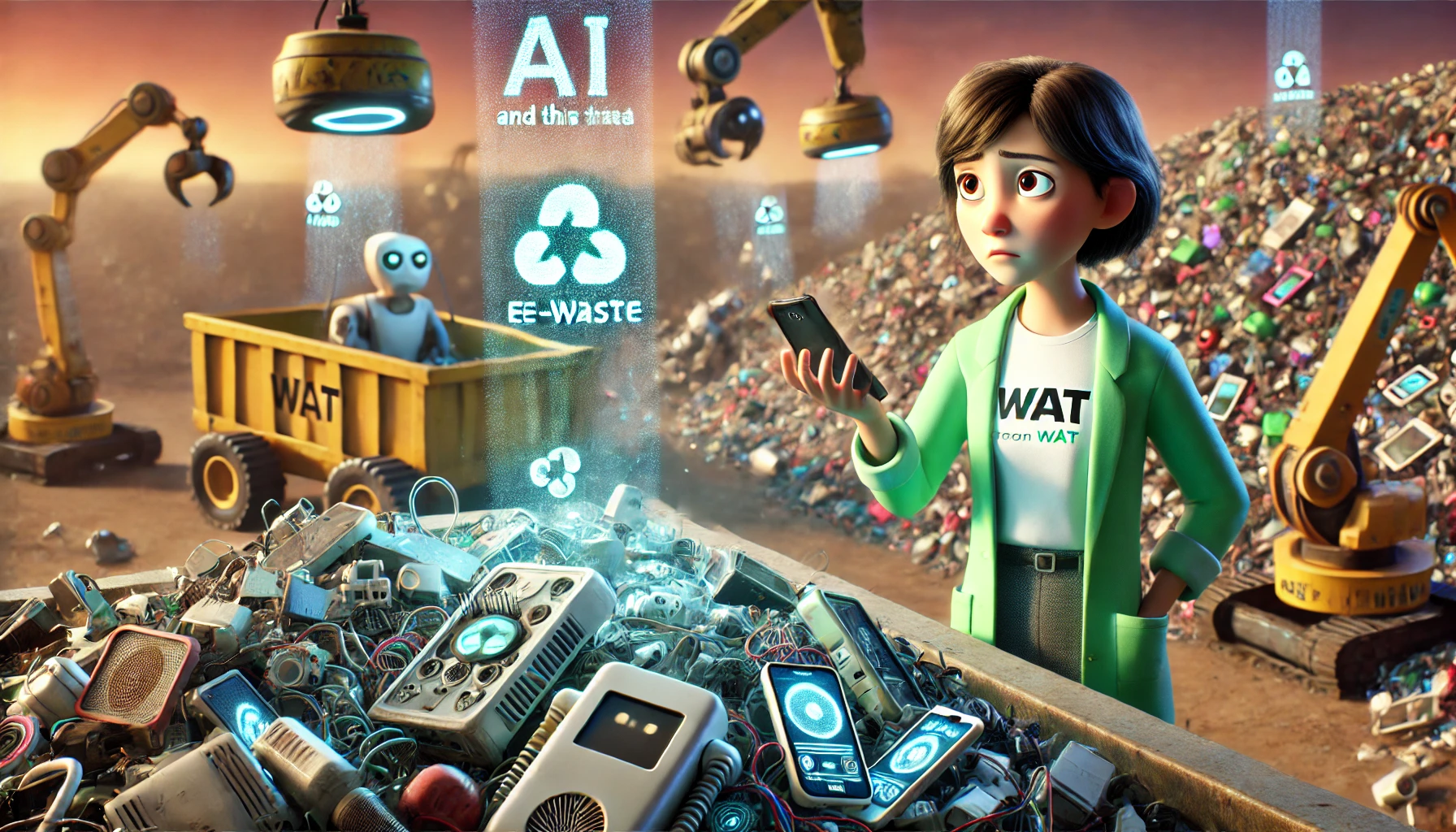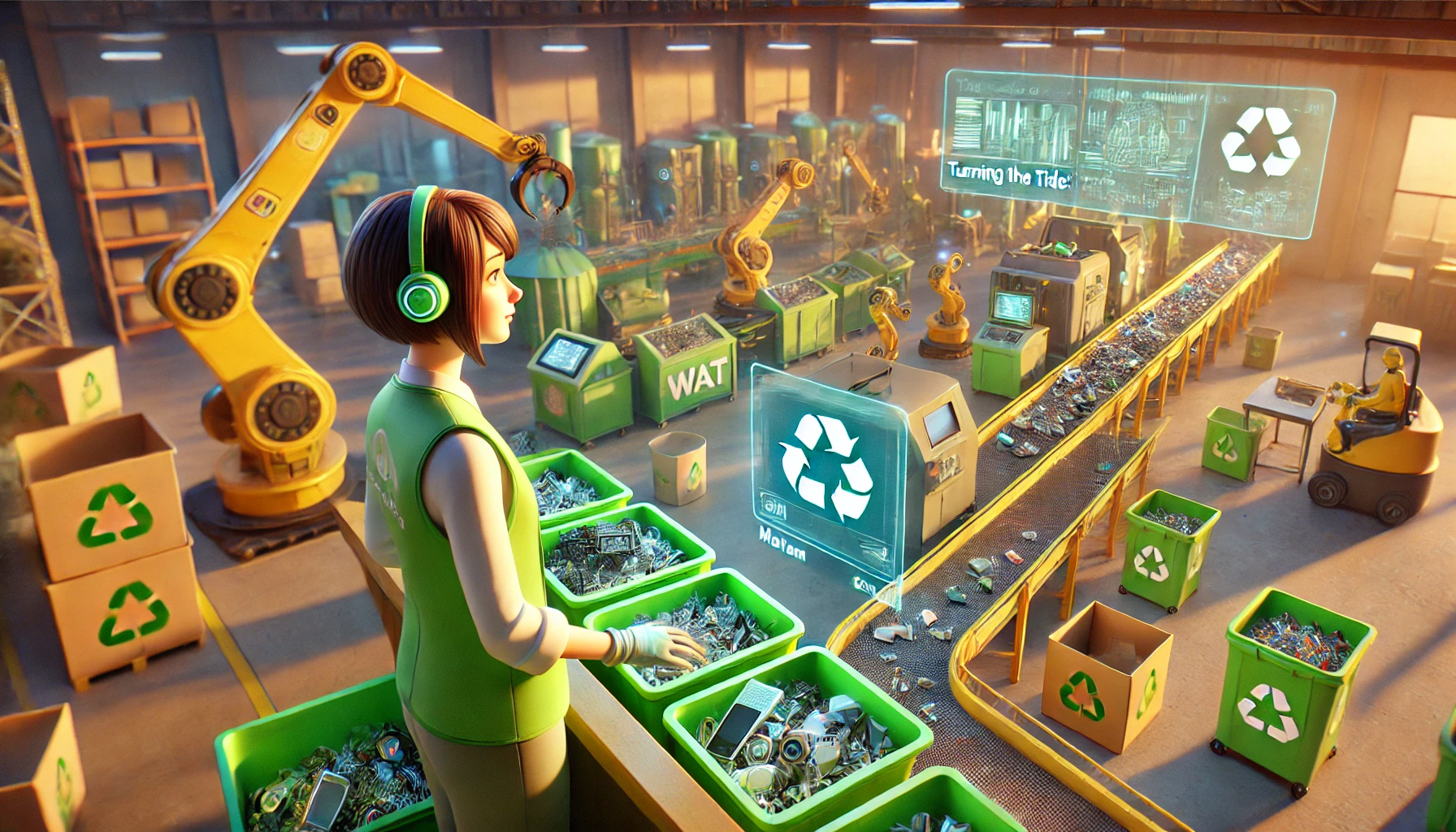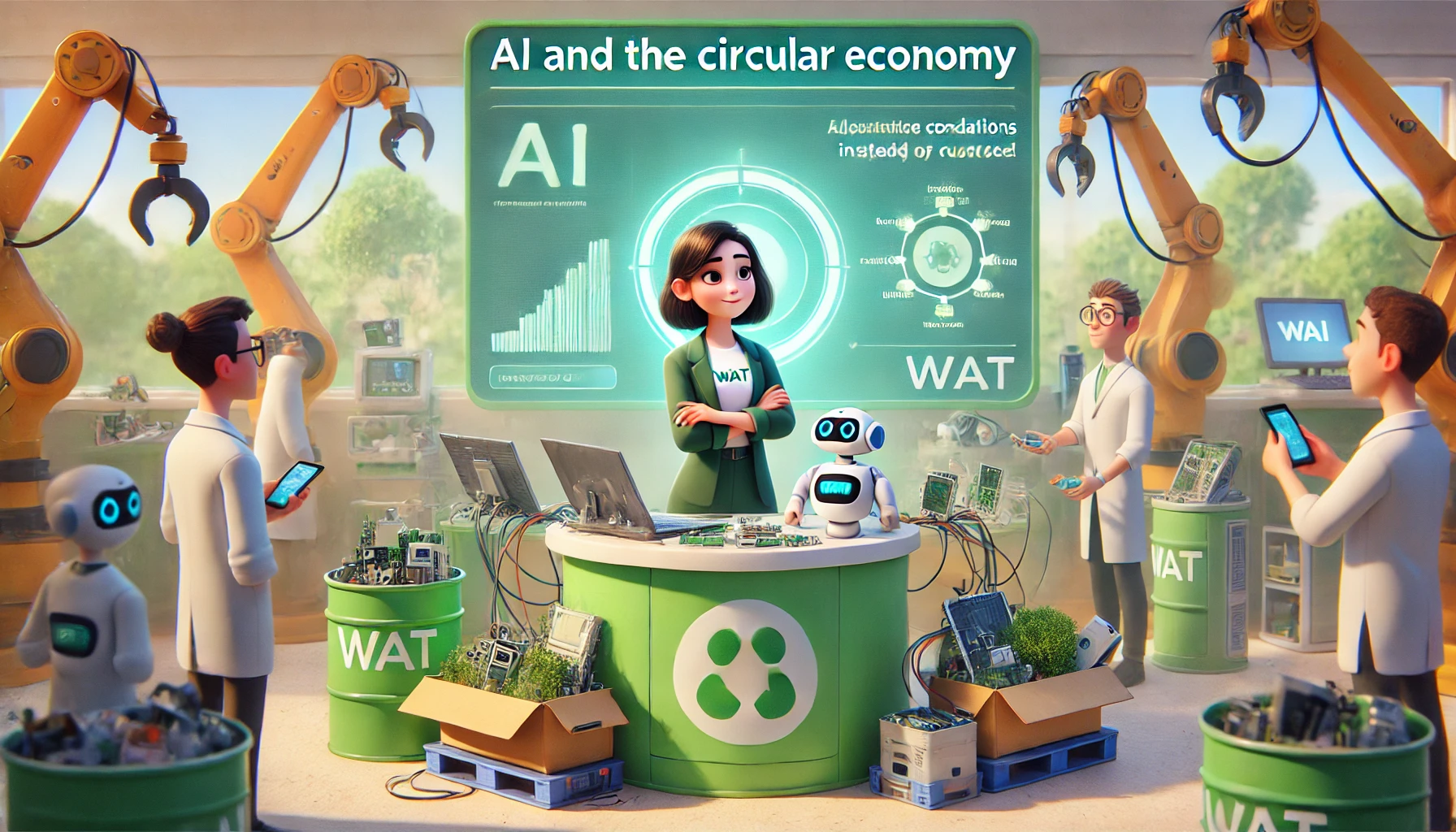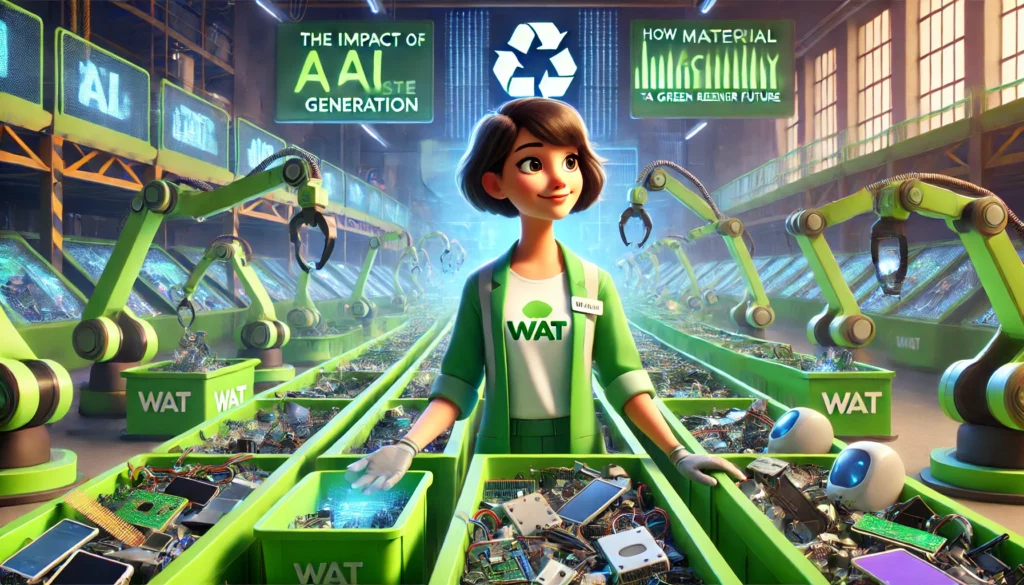Artificial Intelligence (AI) has become an integral part of modern technology, revolutionizing industries ranging from healthcare to transportation. However, this rapid rise in AI adoption comes with environmental consequences, particularly in the form of electronic waste (e-waste). As the demand for AI-powered devices grows, it is essential to understand the impact of AI on e-waste generation and how AI can also help mitigate this issue for a more sustainable future.
AI and the Rise of E-Waste

The integration of AI into various consumer electronics—from smartphones and laptops to smart home devices and industrial machines—has led to more advanced and sophisticated technology. However, as these devices become more complex, they also become more disposable. The rapid pace of innovation in AI-powered electronics leads to shorter product lifecycles, with consumers replacing devices more frequently due to minor performance issues, software obsolescence, or the availability of newer models. This trend contributes significantly to the growing mountain of e-waste.
AI-powered electronics often require specialized hardware like processors, memory chips, and GPUs to operate efficiently. As these components evolve quickly, older devices are frequently discarded, exacerbating the global e-waste crisis. E-waste contains hazardous substances such as lead, mercury, and cadmium, which, when not disposed of properly, can pollute the environment, harming soil, water, and air. As AI technology evolves, it is vital to address the lifecycle of these devices to minimize the environmental harm associated with their use and disposal.
AI's Contribution to E-Waste Generation
One of the main contributors to e-waste generation in the AI sector is the continuous innovation cycle that encourages consumers to upgrade their devices regularly. AI features in everyday electronics, including smartphones, laptops, wearables, and even household devices, often lead to devices being replaced before they reach the end of their useful life. This increases the volume of e-waste, creating long-term challenges for waste management and disposal.
Furthermore, the rapid development of hardware to support AI operations has a direct impact on e-waste generation. As newer, faster, and more energy-efficient processors are developed, older hardware becomes obsolete, contributing to an increase in the disposal of outdated devices. The faster turnover of these devices, driven by AI innovation, adds significant pressure on already struggling e-waste recycling systems.
The Role of AI in Waste Management: Turning the Tide

Despite its role in driving e-waste generation, AI holds significant potential in mitigating its environmental impact. By leveraging AI-driven solutions, the waste management industry can become more efficient, helping to reduce the environmental footprint of e-waste.
1. Recycling Efficiency
Traditional recycling methods are often slow and labor-intensive, relying on manual sorting to separate valuable materials. AI-powered robots, equipped with advanced sensors and machine learning algorithms, can automate these processes. By accurately identifying and sorting metals, plastics, and other materials, AI-driven systems can ensure that valuable resources are recovered and reused, significantly improving the efficiency of recycling.
2. Enhancing Material Recovery
AI can also optimize the recovery of precious metals like gold, silver, and palladium, which are often present in e-waste. AI systems can analyze vast datasets to determine the most effective and environmentally-friendly methods for extracting these materials. By improving recovery rates, AI reduces the need for resource-intensive mining activities, which are often harmful to the environment.
3. Smart Waste Sorting
AI systems can enhance waste sorting by learning to identify different materials with high precision. These systems can automate the separation of electronic components such as batteries, circuit boards, and cables, ensuring that they are processed separately to minimize contamination. This improves recycling rates and ensures that hazardous materials are handled safely.
Predictive Maintenance: Reducing E-Waste Through Longevity
AI can also play a crucial role in extending the lifespan of electronic devices, thereby reducing e-waste. A major driver of e-waste is the premature disposal of devices due to hardware failure or wear. With AI-powered predictive maintenance systems, devices can monitor their own health, alerting users when repairs or replacements are needed before problems escalate. This can help users avoid unnecessary device upgrades, extending the useful life of their electronics and reducing waste.
For instance, AI can monitor smartphone and laptop batteries to identify when they need to be optimized or replaced. This proactive approach can prevent devices from being discarded prematurely, thus reducing the frequency of upgrades and minimizing e-waste generation.
AI and the Circular Economy

AI is also a key enabler of the circular economy, where products are reused, refurbished, and recycled instead of being discarded. AI-driven systems can track the lifecycle of products and identify opportunities for reuse or recycling. By analyzing the condition of electronic devices, AI can help determine when a device is suitable for refurbishment or when certain parts can be repurposed.
For example, AI can be used to identify functional components of a smartphone or laptop that can be reused, reducing the amount of e-waste that ends up in landfills. AI can also streamline the reverse logistics process, making it easier for consumers to return their old devices for recycling or repurposing.
Designing for Sustainability: AI and the Future of Electronics
To address the growing e-waste issue, manufacturers must prioritize sustainability in the design of AI-powered devices. Modular designs that allow for easy upgrades and repairs can reduce the tendency for consumers to discard their devices prematurely. AI can assist in optimizing product design by suggesting sustainable materials and components that are more recyclable.
AI-powered tools can also assess the environmental impact of different materials, helping manufacturers choose components that are durable and easy to recycle, further reducing e-waste.
A Greener Future Powered by AI
While AI contributes to the growing problem of e-waste, it also offers powerful solutions to help reduce its environmental impact. By improving recycling processes, enhancing material recovery, and extending the lifespan of devices through predictive maintenance, AI can play a vital role in creating a more sustainable future. By embracing AI’s potential to optimize waste management and support a circular economy, we can move toward a future where technology not only enhances our lives but also minimizes its environmental footprint.
Incorporating AI into every stage of a product’s lifecycle—from design and manufacturing to usage and disposal—ensures that AI can contribute to a greener, more sustainable future, where technology and the environment coexist harmoniously.
